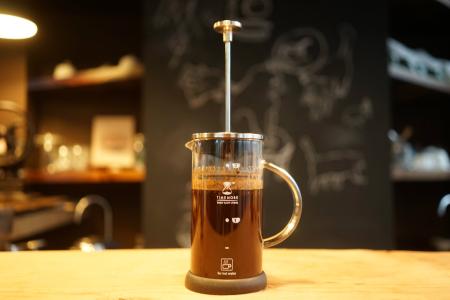McDonald's coffee scald case actually compensated for more than 400,000 US dollars-third-degree scald "area accounts for the whole body skin"
At that time, the old lady sat in the passenger seat in the front seat, parked the cup between her knees, held a bag of milk powder and sugar in her left hand, and tried to open the lid in her right hand. Unexpectedly, an accidental mistake caused a whole cup of scalding coffee to be spilled between her legs, resulting in serious burns on the inner thigh, groin, vulva and front buttocks, of which "third-degree burns" accounted for 6% of the whole body skin.
In medical terms, the severity of scald mainly depends on "area" and "depth". The scald of the skin epidermis belongs to "one-time scald", the skin is red and swollen, feel pain, but can be cured after a few days; in the "second-degree scald" of the wound and dermis, blisters grow on the surface of the skin, and the pain is unbearable, but it can be cured within one to two weeks; scald wounds deep in the dermis take three to four weeks to heal. Deep scald between dermis and subcutaneous tissue is the most serious "third-degree scald". The wound turns white, no pain is felt, and the subcutaneous tissue is completely necrosised. Even if it is cured, it will never be able to restore its original function. When the scope of injury is too large, skin grafting is needed. "third-degree scald" is mostly caused by high temperature, or the temperature is only "sub-high temperature", but like the "hot water bag" scald effect, it is caused by long-term effect.
In the McDonald's Coffee case, why did he spill a cup of coffee, resulting in a very serious "third-degree scald"? The main reasons are: first, the coffee sold by McDonald's at that time was really incredibly hot, and the temperature was 10-16 degrees Celsius higher than that of the industry, and the details will be detailed later; second, the "sensitive area" between women's legs happens to be the most delicate part of the skin of the whole body. Third, instead of spilling hot coffee on bare skin and losing it automatically after a few seconds, it was spilled on the thin cloth trousers worn by the old lady. at that time, it was not and difficult to cut the trousers quickly, resulting in a "hot water bag" scald effect.
After eight days in the hospital, poor Liebok was finally out of danger and was bedridden after being discharged from the hospital. it was not until more than two months later that the wound gradually healed, and then she underwent many skin grafts, making it difficult to walk for as long as two years. As a result of the "sensitive parts" were scalded, the old man suffered great physical and mental pain, and even nearly caused life danger. Although Lieboke's daughter is prepared in advance to buy health insurance for her mother, and although Lipperk herself enjoys federal subsidies for people over the age of 65, the out-of-pocket medical expenses are still staggering.
Lieboke's family sues McDonald's
After the injury was initially stable, Lieboke's daughter was so aggrieved that she wrote a letter of complaint to McDonald's, claiming compensation for medical expenses and late work expenses for taking care of the patient, totaling $20,000, citing the fact that the coffee was too hot. However, McDonald's is short-sighted and headstrong. It refuses to "save money from disaster" and only agrees to pay a "comfort fee" of $800. But the Liebock family would not give up easily.
It wasn't long before Lieboke's daughter accidentally met a Texas lawyer named S.Reed Morgan, who was shrewd, experienced and good at compensation lawsuits. He once provided legal services to a customer who was scalded by coffee, negotiated with McDonald's, and finally reached an out-of-court settlement that won $20, 000 in damages. After a preliminary understanding of the case, Morgan's lawyer ruled that the old lady's injury was shocking and that McDonald's could not escape legal responsibility because she was "broken" between her legs. As a result, Lieboke plucked up the courage to sue McDonald's in Federal District Court on the grounds of coffee quality defects, endangering personal safety and causing a liability accident.
In product liability cases in the United States, consumers can often win as long as they prove that the product is defective and cause personal and property damage. In the McDonald's Coffee case, the applicable law is civil tort, which is based on the fact that McDonald's is the owner of a fast food restaurant and has the responsibility and obligation to provide protection to customers on its own initiative; if the coffee temperature is too high and there is no prior warning, customers have the right to sue for compensation if they suffer physical injury and property damage. If the tort is "reckless" and "malicious", the plaintiff will not only receive actual damages (repayment of medical expenses, compensation for missing work, etc.), but also mental damages and huge punitive damages after winning the lawsuit.

Important Notice :
前街咖啡 FrontStreet Coffee has moved to new addredd:
FrontStreet Coffee Address: 315,Donghua East Road,GuangZhou
Tel:020 38364473
- Prev

Salabis Coffee which rapidly affects the Young Consumer Market in China
Salabis Coffee is dominated by high-quality fancy coffee drinks, rapidly affecting China's young consumer market.
- Next

The population of Chinese coffee consumers is expanding and becoming more and more popular in China.
Experts have found that drinking moderate amounts of coffee for a long time can reduce human mortality, especially those caused by heart and nervous system diseases. In addition, both regular coffee and decaf coffee have the same protective effect on the human body, so experts believe that the active ingredient in the health effect of coffee is not caffeine, but probably some antioxidants. Experts also said that
Related
- Being chased out of the rain in front of Starbucks?! Store: Sheltering from rain under umbrellas poses a safety hazard
- The white moonlight has changed?! Lucky launches "Big Winter Pear American"
- Hand-brewed coffee three-stage method, high-sweet and universal brewing method to share! What does the high sweet water level of hand-brewed coffee mean?
- What is the difference between raw, refined and full espresso coffee? How to extract espresso and taste good?
- A complete list of coffee bean names and their meanings! What is Yejia Shefi coffee? Where is Mantelin coffee?
- What grade does Arida Manor Kaduai coffee beans belong to? What treatment is Arida ASD slow anaerobic sun exposure?
- The milk tea cup becomes smaller?! Overlord Tea Girl launches a new "Return to Yunnan" series
- Accused of selling counterfeit and high-priced coffee beans! Well-known boutique coffee brand "Oukelao" bowed and apologized!
- How to make espresso dumplings? Can I eat coffee and glutinous rice balls together?
- Save the unformed and stagnant powder cakes in one second! What is the problem with stagnant water in the powder bowl of the espresso machine?

